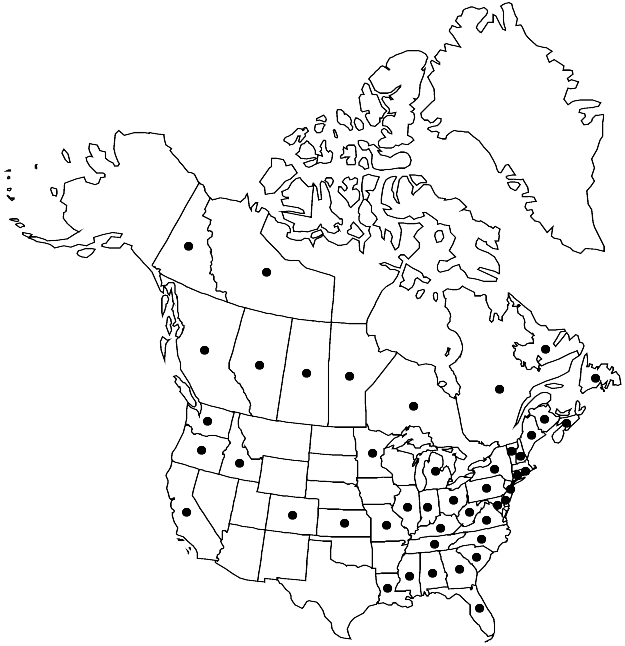Pseudocampylium radicale
J. Bryol. 31: 131. 2009.
Plants in soft, loose mats. Stems creeping; central strand cells small, walls thin; paraphyllia narrowly lanceolate to ovatelanceolate; axillary hair basal-cell 1, elongate, rectangular to long-rectangular, brown, distal cells elongate. Stem-leaves 0.8–1.6 mm wide; alar cells few; medial laminal cells 30–60 × 5–9 µm, 4–8: 1. Perichaetial leaves lanceolate. Seta elongate, 2–4.5 cm. Capsule 1.5–2 mm, constricted below mouth when dry; annulus separating, 2-seriate or 3-seriate; operculum conic; exostome yellowbrown, external surface cross-striolate basally, papillose distally, internal surface trabeculate. Spores finely roughened.
Habitat: Humus, litter, mineral-rich and eutrophic wet meadows and swamps, under dense grass and sedge vegetation
Elevation: low to high elevations (0-3000 m)
Distribution

Alta., B.C., Man., N.B., Nfld. and Labr., N.W.T., N.S., Ont., Que., Sask., Yukon, Ala., Calif., Colo., Conn., Del., Fla., Ga., Idaho, Ill., Ind., Kans., Ky., La., Maine, Md., Mich., Minn., Miss., Mo., N.H., N.J., N.Y., N.C., Ohio, Oreg., Pa., R.I., S.C., Tenn., Vt., Va., Wash., W.Va., Mexico, Central America, Europe
Discussion
The morphology of Pseudocampylium radicale may be misleading, since the species shares with Campylium (in the broad sense) spreading to squarrose stem leaves. Specimens with non-squarrose leaves also bear much resemblance to Hygroamblystegium varium var. humile, which occurs in similar habitats. Pseudocampylium radicale may be distinguished from the latter by the decurrency of the stem leaves.
Selected References
None.
Lower Taxa
"narrower" is not a number.
